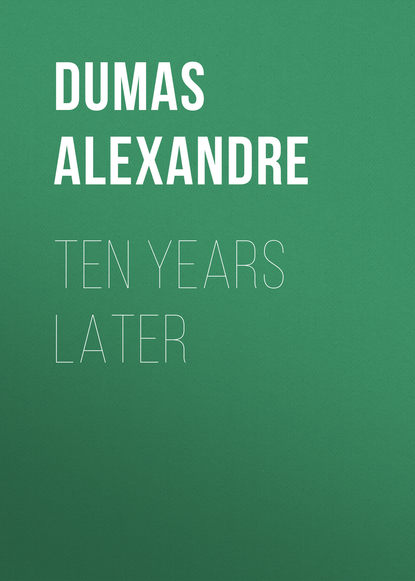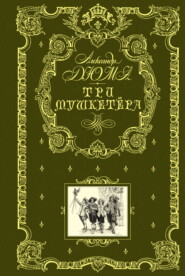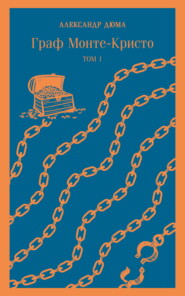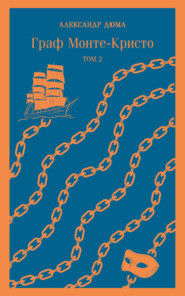По всем вопросам обращайтесь на: info@litportal.ru
(©) 2003-2024.
✖
Ten Years Later
Настройки чтения
Размер шрифта
Высота строк
Поля
Ten Years Later
Alexandre Dumas
Alexandre Dumas
Ten Years Later
Transcriber’s Notes:
As you may be aware, Project Gutenberg has been involved with the writings of both the Alexandre Dumases for some time now, and since we get a few questions about the order in which the books should be read, and in which they were published, these following comments should hopefully help most of our readers.
The Vicomte de Bragelonne is the final volume of D’Artagnan Romances: it is usually split into three or four parts, and the final portion is entitled The Man in the Iron Mask. The Man in the Iron Mask we’re familiar with today is the last volume of the four-volume edition. [Not all the editions split them in the same manner, hence some of the confusion…but wait…there’s yet more reason for confusion.]
We intend to do ALL of The Vicomte de Bragelonne, split into four etexts entitled The Vicomte de Bragelonne, Ten Years Later, Louise de la Valliere, and The Man in the Iron Mask; you WILL be getting The Man in the Iron Mask.
One thing that may be causing confusion is that the etext we have now, entitled Ten Years Later, says it’s the sequel to The Three Musketeers. While this is technically true, there’s another book, Twenty Years After, that comes between. The confusion is generated by the two facts that we published Ten Years Later BEFORE we published Twenty Years After, and that many people see those titles as meaning Ten and Twenty Years “After” the original story…however, this is why the different words “After” and “Later”…the Ten Years “After” is ten years after the Twenty Years later…as per history. Also, the third book of the D’Artagnan Romances, while entitled The Vicomte de Bragelonne, has the subtitle Ten Years Later. These two titles are also given to different volumes: The Vicomte de Bragelonne can refer to the whole book, or the first volume of the three or four-volume editions. Ten Years Later can, similarly, refer to the whole book, or the second volume of the four-volume edition. To add to the confusion, in the case of our etexts, it refers to the first 104 chapters of the whole book, covering material in the first and second etexts in the new series. Here is a guide to the series which may prove helpful:
The Three Musketeers: Etext 1257 – First book of the D’Artagnan Romances. Covers the years 1625-1628.
Twenty Years After: Etext 1259 – Second book of the D’Artagnan Romances. Covers the years 1648-1649. [Third in the order that we published, but second in time sequence!!!]
Ten Years Later: Etext 1258 – First 104 chapters of the third book of the D’Artagnan Romances. Covers the years 1660-1661.
The Vicomte de Bragelonne: Etext 2609 (first in the new series) – First 75 chapters of the third book of the D’Artagnan Romances. Covers the year 1660.
Ten Years Later: Etext 2681 (our new etext) – Chapters 76-140 of that third book of the D’Artagnan Romances. Covers the years 1660-1661. [In this particular editing of it]
Louise de la Valliere: forthcoming (our next etext) – Chapters 141-208 of the third book of the D’Artagnan Romances. Covers the year 1661.
The Man in the Iron Mask: forthcoming (following) – Chapters 209-269 of the third book of the D’Artagnan Romances. Covers the years 1661-1673.
If we’ve calculated correctly, that fourth text SHOULD correspond to the modern editions of The Man in the Iron Mask, which is still widely circulated, and comprises about the last 1/4 of The Vicomte de Bragelonne.
Here is a list of the other Dumas Etexts we have published so far:
Sep 1999 La Tulipe Noire, by Alexandre Dumas[Pere#6/French][tlpnrxxx.xxx]1910 This is an abridged edition in French, also see our full length English Etext Jul 1997 The Black Tulip, by Alexandre Dumas[Pere][Dumas#1][tbtlpxxx.xxx] 965 Jan 1998 The Count of Monte Cristo by Alexandre Dumas[Pere][crstoxxx.xxx]1184
Many thanks to Dr. David Coward, whose editions of the D’Artagnan Romances have proved an invaluable source of information.
Introduction:
In the months of March-July in 1844, in the magazine Le Siecle, the first portion of a story appeared, penned by the celebrated playwright Alexandre Dumas. It was based, he claimed, on some manuscripts he had found a year earlier in the Bibliotheque Nationale while researching a history he planned to write on Louis XIV. They chronicled the adventures of a young man named D’Artagnan who, upon entering Paris, became almost immediately embroiled in court intrigues, international politics, and ill-fated affairs between royal lovers. Over the next six years, readers would enjoy the adventures of this youth and his three famous friends, Porthos, Athos, and Aramis, as their exploits unraveled behind the scenes of some of the most momentous events in French and even English history.
Eventually these serialized adventures were published in novel form, and became the three D’Artagnan Romances known today. Here is a brief summary of the first two novels:
The Three Musketeers (serialized March-July, 1844): The year is 1625. The young D’Artagnan arrives in Paris at the tender age of 18, and almost immediately offends three musketeers, Porthos, Aramis, and Athos. Instead of dueling, the four are attacked by five of the Cardinal’s guards, and the courage of the youth is made apparent during the battle. The four become fast friends, and, when asked by D’Artagnan’s landlord to find his missing wife, embark upon an adventure that takes them across both France and England in order to thwart the plans of the Cardinal Richelieu. Along the way, they encounter a beautiful young spy, named simply Milady, who will stop at nothing to disgrace Queen Anne of Austria before her husband, Louis XIII, and take her revenge upon the four friends.
Twenty Years After (serialized January-August, 1845): The year is now 1648, twenty years since the close of the last story. Louis XIII has died, as has Cardinal Richelieu, and while the crown of France may sit upon the head of Anne of Austria as Regent for the young Louis XIV, the real power resides with the Cardinal Mazarin, her secret husband. D’Artagnan is now a lieutenant of musketeers, and his three friends have retired to private life. Athos turned out to be a nobleman, the Comte de la Fere, and has retired to his home with his son, Raoul de Bragelonne. Aramis, whose real name is D’Herblay, has followed his intention of shedding the musketeer’s cassock for the priest’s robes, and Porthos has married a wealthy woman, who left him her fortune upon her death. But trouble is stirring in both France and England. Cromwell menaces the institution of royalty itself while marching against Charles I, and at home the Fronde is threatening to tear France apart. D’Artagnan brings his friends out of retirement to save the threatened English monarch, but Mordaunt, the son of Milady, who seeks to avenge his mother’s death at the musketeers’ hands, thwarts their valiant efforts. Undaunted, our heroes return to France just in time to help save the young Louis XIV, quiet the Fronde, and tweak the nose of Cardinal Mazarin.
The third novel, The Vicomte de Bragelonne (serialized October, 1847 – January, 1850), has enjoyed a strange history in its English translation. It has been split into three, four, or five volumes at various points in its history. The five-volume edition generally does not give titles to the smaller portions, but the others do. In the three-volume edition, the novels are entitled The Vicomte de Bragelonne, Louise de la Valliere, and The Man in the Iron Mask. For the purposes of this etext, I have chosen to split the novel as the four-volume edition does, with these titles: The Vicomte de Bragelonne, Ten Years Later, Louise de la Valliere, and The Man in the Iron Mask. In the last etext:
The Vicomte de Bragelonne (Etext 2609): It is the year 1660, and D’Artagnan, after thirty-five years of loyal service, has become disgusted with serving King Louis XIV while the real power resides with the Cardinal Mazarin, and has tendered his resignation. He embarks on his own project, that of restoring Charles II to the throne of England, and, with the help of Athos, succeeds, earning himself quite a fortune in the process. D’Artagnan returns to Paris to live the life of a rich citizen, and Athos, after negotiating the marriage of Philip, the king’s brother, to Princess Henrietta of England, likewise retires to his own estate, La Fere. Meanwhile, Mazarin has finally died, and left Louis to assume the reigns of power, with the assistance of M. Colbert, formerly Mazarin’s trusted clerk. Colbert has an intense hatred for M. Fouquet, the king’s superintendent of finances, and has resolved to use any means necessary to bring about his fall. With the new rank of intendant bestowed on him by Louis, Colbert succeeds in having two of Fouquet’s loyal friends tried and executed. He then brings to the king’s attention that Fouquet is fortifying the island of Belle-Ile-en-Mer, and could possibly be planning to use it as a base for some military operation against the king. Louis calls D’Artagnan out of retirement and sends him to investigate the island, promising him a tremendous salary and his long-promised promotion to captain of the musketeers upon his return. At Belle-Isle, D’Artagnan discovers that the engineer of the fortifications is, in fact, Porthos, now the Baron du Vallon, and that’s not all. The blueprints for the island, although in Porthos’s handwriting, show evidence of another script that has been erased, that of Aramis. D’Artagnan later discovers that Aramis has become the bishop of Vannes, which is, coincidentally, a parish belonging to M. Fouquet. Suspecting that D’Artagnan has arrived on the king’s behalf to investigate, Aramis tricks D’Artagnan into wandering around Vannes in search of Porthos, and sends Porthos on an heroic ride back to Paris to warn Fouquet of the danger. Fouquet rushes to the king, and gives him Belle-Isle as a present, thus allaying any suspicion, and at the same time humiliating Colbert, just minutes before the usher announces someone else seeking an audience with the king.
And now, the second etext of The Vicomte de Bragelonne. Enjoy!
John Bursey Mordaunt
There is one French custom that may cause confusion. The Duc d’Orleans is traditionally called “Monsieur” and his wife “Madame.” Gaston, the king’s uncle, currently holds that title. Upon the event of his death, it will be conferred upon the king’s brother, Philip, who is currently the Duc d’Anjou. The customary title of “Monsieur” will go to him as well, and upon his future wife, Henrietta of England, that of “Madame.” Gaston’s widow will be referred to as the “Dowager Madame.” – JB
Chapter I. In which D’Artagnan finishes by at Length placing his Hand upon his Captain’s Commission
The reader guesses beforehand whom the usher preceded in announcing the courier from Bretagne. This messenger was easily recognized. It was D’Artagnan, his clothes dusty, his face inflamed, his hair dripping with sweat, his legs stiff; he lifted his feet painfully at every step, on which resounded the clink of his blood-stained spurs. He perceived in the doorway he was passing through, the superintendent coming out. Fouquet bowed with a smile to him who, an hour before, was bringing him ruin and death. D’Artagnan found in his goodness of heart, and in his inexhaustible vigor of body, enough presence of mind to remember the kind reception of this man; he bowed then, also, much more from benevolence and compassion, than from respect. He felt upon his lips the word which had so many times been repeated to the Duc de Guise: “Fly.” But to pronounce that word would have been to betray his cause; to speak that word in the cabinet of the king, and before an usher, would have been to ruin himself gratuitously, and could save nobody. D’Artagnan then, contented himself with bowing to Fouquet and entered. At this moment the king floated between the joy the last words of Fouquet had given him, and his pleasure at the return of D’Artagnan. Without being a courtier, D’Artagnan had a glance as sure and as rapid as if he had been one. He read, on his entrance, devouring humiliation on the countenance of Colbert. He even heard the king say these words to him: —
“Ah! Monsieur Colbert; you have then nine hundred thousand livres at the intendance?” Colbert, suffocated, bowed but made no reply. All this scene entered into the mind of D’Artagnan, by the eyes and ears, at once.
The first word of Louis to his musketeer, as if he wished it to contrast with what he was saying at the moment, was a kind “good day.” His second was to send away Colbert. The latter left the king’s cabinet, pallid and tottering, whilst D’Artagnan twisted up the ends of his mustache.
“I love to see one of my servants in this disorder,” said the king, admiring the martial stains upon the clothes of his envoy.
“I thought, sire, my presence at the Louvre was sufficiently urgent to excuse my presenting myself thus before you.”
“You bring me great news, then, monsieur?”
“Sire, the thing is this, in two words: Belle-Isle is fortified, admirably fortified; Belle-Isle has a double enceinte, a citadel, two detached forts; its ports contain three corsairs; and the side batteries only await their cannon.”
“I know all that, monsieur,” replied the king.
“What! your majesty knows all that?” replied the musketeer, stupefied.
“I have the plan of the fortifications of Belle-Isle,” said the king.
“Your majesty has the plan?”
“Here it is.”
“It is really correct, sire: I saw a similar one on the spot.”
D’Artagnan’s brow became clouded.
“Ah! I understand all. Your majesty did not trust to me alone, but sent some other person,” said he in a reproachful tone.
“Of what importance is the manner, monsieur, in which I have learnt what I know, so that I know it?”
“Sire, sire,” said the musketeer, without seeking even to conceal his dissatisfaction; “but I must be permitted to say to your majesty, that it is not worth while to make me use such speed, to risk twenty times the breaking of my neck, to salute me on my arrival with such intelligence. Sire, when people are not trusted, or are deemed insufficient, they should scarcely be employed.” And D’Artagnan, with a movement perfectly military, stamped with his foot, and left upon the floor dust stained with blood. The king looked at him, inwardly enjoying his first triumph.
“Monsieur,” said he, at the expiration of a minute, “not only is Belle-Isle known to me, but, still further, Belle-Isle is mine.”
“That is well! that is well, sire, I ask but one thing more,” replied D’Artagnan. – “My discharge.”
“What! your discharge?”
Alexandre Dumas
Alexandre Dumas
Ten Years Later
Transcriber’s Notes:
As you may be aware, Project Gutenberg has been involved with the writings of both the Alexandre Dumases for some time now, and since we get a few questions about the order in which the books should be read, and in which they were published, these following comments should hopefully help most of our readers.
The Vicomte de Bragelonne is the final volume of D’Artagnan Romances: it is usually split into three or four parts, and the final portion is entitled The Man in the Iron Mask. The Man in the Iron Mask we’re familiar with today is the last volume of the four-volume edition. [Not all the editions split them in the same manner, hence some of the confusion…but wait…there’s yet more reason for confusion.]
We intend to do ALL of The Vicomte de Bragelonne, split into four etexts entitled The Vicomte de Bragelonne, Ten Years Later, Louise de la Valliere, and The Man in the Iron Mask; you WILL be getting The Man in the Iron Mask.
One thing that may be causing confusion is that the etext we have now, entitled Ten Years Later, says it’s the sequel to The Three Musketeers. While this is technically true, there’s another book, Twenty Years After, that comes between. The confusion is generated by the two facts that we published Ten Years Later BEFORE we published Twenty Years After, and that many people see those titles as meaning Ten and Twenty Years “After” the original story…however, this is why the different words “After” and “Later”…the Ten Years “After” is ten years after the Twenty Years later…as per history. Also, the third book of the D’Artagnan Romances, while entitled The Vicomte de Bragelonne, has the subtitle Ten Years Later. These two titles are also given to different volumes: The Vicomte de Bragelonne can refer to the whole book, or the first volume of the three or four-volume editions. Ten Years Later can, similarly, refer to the whole book, or the second volume of the four-volume edition. To add to the confusion, in the case of our etexts, it refers to the first 104 chapters of the whole book, covering material in the first and second etexts in the new series. Here is a guide to the series which may prove helpful:
The Three Musketeers: Etext 1257 – First book of the D’Artagnan Romances. Covers the years 1625-1628.
Twenty Years After: Etext 1259 – Second book of the D’Artagnan Romances. Covers the years 1648-1649. [Third in the order that we published, but second in time sequence!!!]
Ten Years Later: Etext 1258 – First 104 chapters of the third book of the D’Artagnan Romances. Covers the years 1660-1661.
The Vicomte de Bragelonne: Etext 2609 (first in the new series) – First 75 chapters of the third book of the D’Artagnan Romances. Covers the year 1660.
Ten Years Later: Etext 2681 (our new etext) – Chapters 76-140 of that third book of the D’Artagnan Romances. Covers the years 1660-1661. [In this particular editing of it]
Louise de la Valliere: forthcoming (our next etext) – Chapters 141-208 of the third book of the D’Artagnan Romances. Covers the year 1661.
The Man in the Iron Mask: forthcoming (following) – Chapters 209-269 of the third book of the D’Artagnan Romances. Covers the years 1661-1673.
If we’ve calculated correctly, that fourth text SHOULD correspond to the modern editions of The Man in the Iron Mask, which is still widely circulated, and comprises about the last 1/4 of The Vicomte de Bragelonne.
Here is a list of the other Dumas Etexts we have published so far:
Sep 1999 La Tulipe Noire, by Alexandre Dumas[Pere#6/French][tlpnrxxx.xxx]1910 This is an abridged edition in French, also see our full length English Etext Jul 1997 The Black Tulip, by Alexandre Dumas[Pere][Dumas#1][tbtlpxxx.xxx] 965 Jan 1998 The Count of Monte Cristo by Alexandre Dumas[Pere][crstoxxx.xxx]1184
Many thanks to Dr. David Coward, whose editions of the D’Artagnan Romances have proved an invaluable source of information.
Introduction:
In the months of March-July in 1844, in the magazine Le Siecle, the first portion of a story appeared, penned by the celebrated playwright Alexandre Dumas. It was based, he claimed, on some manuscripts he had found a year earlier in the Bibliotheque Nationale while researching a history he planned to write on Louis XIV. They chronicled the adventures of a young man named D’Artagnan who, upon entering Paris, became almost immediately embroiled in court intrigues, international politics, and ill-fated affairs between royal lovers. Over the next six years, readers would enjoy the adventures of this youth and his three famous friends, Porthos, Athos, and Aramis, as their exploits unraveled behind the scenes of some of the most momentous events in French and even English history.
Eventually these serialized adventures were published in novel form, and became the three D’Artagnan Romances known today. Here is a brief summary of the first two novels:
The Three Musketeers (serialized March-July, 1844): The year is 1625. The young D’Artagnan arrives in Paris at the tender age of 18, and almost immediately offends three musketeers, Porthos, Aramis, and Athos. Instead of dueling, the four are attacked by five of the Cardinal’s guards, and the courage of the youth is made apparent during the battle. The four become fast friends, and, when asked by D’Artagnan’s landlord to find his missing wife, embark upon an adventure that takes them across both France and England in order to thwart the plans of the Cardinal Richelieu. Along the way, they encounter a beautiful young spy, named simply Milady, who will stop at nothing to disgrace Queen Anne of Austria before her husband, Louis XIII, and take her revenge upon the four friends.
Twenty Years After (serialized January-August, 1845): The year is now 1648, twenty years since the close of the last story. Louis XIII has died, as has Cardinal Richelieu, and while the crown of France may sit upon the head of Anne of Austria as Regent for the young Louis XIV, the real power resides with the Cardinal Mazarin, her secret husband. D’Artagnan is now a lieutenant of musketeers, and his three friends have retired to private life. Athos turned out to be a nobleman, the Comte de la Fere, and has retired to his home with his son, Raoul de Bragelonne. Aramis, whose real name is D’Herblay, has followed his intention of shedding the musketeer’s cassock for the priest’s robes, and Porthos has married a wealthy woman, who left him her fortune upon her death. But trouble is stirring in both France and England. Cromwell menaces the institution of royalty itself while marching against Charles I, and at home the Fronde is threatening to tear France apart. D’Artagnan brings his friends out of retirement to save the threatened English monarch, but Mordaunt, the son of Milady, who seeks to avenge his mother’s death at the musketeers’ hands, thwarts their valiant efforts. Undaunted, our heroes return to France just in time to help save the young Louis XIV, quiet the Fronde, and tweak the nose of Cardinal Mazarin.
The third novel, The Vicomte de Bragelonne (serialized October, 1847 – January, 1850), has enjoyed a strange history in its English translation. It has been split into three, four, or five volumes at various points in its history. The five-volume edition generally does not give titles to the smaller portions, but the others do. In the three-volume edition, the novels are entitled The Vicomte de Bragelonne, Louise de la Valliere, and The Man in the Iron Mask. For the purposes of this etext, I have chosen to split the novel as the four-volume edition does, with these titles: The Vicomte de Bragelonne, Ten Years Later, Louise de la Valliere, and The Man in the Iron Mask. In the last etext:
The Vicomte de Bragelonne (Etext 2609): It is the year 1660, and D’Artagnan, after thirty-five years of loyal service, has become disgusted with serving King Louis XIV while the real power resides with the Cardinal Mazarin, and has tendered his resignation. He embarks on his own project, that of restoring Charles II to the throne of England, and, with the help of Athos, succeeds, earning himself quite a fortune in the process. D’Artagnan returns to Paris to live the life of a rich citizen, and Athos, after negotiating the marriage of Philip, the king’s brother, to Princess Henrietta of England, likewise retires to his own estate, La Fere. Meanwhile, Mazarin has finally died, and left Louis to assume the reigns of power, with the assistance of M. Colbert, formerly Mazarin’s trusted clerk. Colbert has an intense hatred for M. Fouquet, the king’s superintendent of finances, and has resolved to use any means necessary to bring about his fall. With the new rank of intendant bestowed on him by Louis, Colbert succeeds in having two of Fouquet’s loyal friends tried and executed. He then brings to the king’s attention that Fouquet is fortifying the island of Belle-Ile-en-Mer, and could possibly be planning to use it as a base for some military operation against the king. Louis calls D’Artagnan out of retirement and sends him to investigate the island, promising him a tremendous salary and his long-promised promotion to captain of the musketeers upon his return. At Belle-Isle, D’Artagnan discovers that the engineer of the fortifications is, in fact, Porthos, now the Baron du Vallon, and that’s not all. The blueprints for the island, although in Porthos’s handwriting, show evidence of another script that has been erased, that of Aramis. D’Artagnan later discovers that Aramis has become the bishop of Vannes, which is, coincidentally, a parish belonging to M. Fouquet. Suspecting that D’Artagnan has arrived on the king’s behalf to investigate, Aramis tricks D’Artagnan into wandering around Vannes in search of Porthos, and sends Porthos on an heroic ride back to Paris to warn Fouquet of the danger. Fouquet rushes to the king, and gives him Belle-Isle as a present, thus allaying any suspicion, and at the same time humiliating Colbert, just minutes before the usher announces someone else seeking an audience with the king.
And now, the second etext of The Vicomte de Bragelonne. Enjoy!
John Bursey Mordaunt
There is one French custom that may cause confusion. The Duc d’Orleans is traditionally called “Monsieur” and his wife “Madame.” Gaston, the king’s uncle, currently holds that title. Upon the event of his death, it will be conferred upon the king’s brother, Philip, who is currently the Duc d’Anjou. The customary title of “Monsieur” will go to him as well, and upon his future wife, Henrietta of England, that of “Madame.” Gaston’s widow will be referred to as the “Dowager Madame.” – JB
Chapter I. In which D’Artagnan finishes by at Length placing his Hand upon his Captain’s Commission
The reader guesses beforehand whom the usher preceded in announcing the courier from Bretagne. This messenger was easily recognized. It was D’Artagnan, his clothes dusty, his face inflamed, his hair dripping with sweat, his legs stiff; he lifted his feet painfully at every step, on which resounded the clink of his blood-stained spurs. He perceived in the doorway he was passing through, the superintendent coming out. Fouquet bowed with a smile to him who, an hour before, was bringing him ruin and death. D’Artagnan found in his goodness of heart, and in his inexhaustible vigor of body, enough presence of mind to remember the kind reception of this man; he bowed then, also, much more from benevolence and compassion, than from respect. He felt upon his lips the word which had so many times been repeated to the Duc de Guise: “Fly.” But to pronounce that word would have been to betray his cause; to speak that word in the cabinet of the king, and before an usher, would have been to ruin himself gratuitously, and could save nobody. D’Artagnan then, contented himself with bowing to Fouquet and entered. At this moment the king floated between the joy the last words of Fouquet had given him, and his pleasure at the return of D’Artagnan. Without being a courtier, D’Artagnan had a glance as sure and as rapid as if he had been one. He read, on his entrance, devouring humiliation on the countenance of Colbert. He even heard the king say these words to him: —
“Ah! Monsieur Colbert; you have then nine hundred thousand livres at the intendance?” Colbert, suffocated, bowed but made no reply. All this scene entered into the mind of D’Artagnan, by the eyes and ears, at once.
The first word of Louis to his musketeer, as if he wished it to contrast with what he was saying at the moment, was a kind “good day.” His second was to send away Colbert. The latter left the king’s cabinet, pallid and tottering, whilst D’Artagnan twisted up the ends of his mustache.
“I love to see one of my servants in this disorder,” said the king, admiring the martial stains upon the clothes of his envoy.
“I thought, sire, my presence at the Louvre was sufficiently urgent to excuse my presenting myself thus before you.”
“You bring me great news, then, monsieur?”
“Sire, the thing is this, in two words: Belle-Isle is fortified, admirably fortified; Belle-Isle has a double enceinte, a citadel, two detached forts; its ports contain three corsairs; and the side batteries only await their cannon.”
“I know all that, monsieur,” replied the king.
“What! your majesty knows all that?” replied the musketeer, stupefied.
“I have the plan of the fortifications of Belle-Isle,” said the king.
“Your majesty has the plan?”
“Here it is.”
“It is really correct, sire: I saw a similar one on the spot.”
D’Artagnan’s brow became clouded.
“Ah! I understand all. Your majesty did not trust to me alone, but sent some other person,” said he in a reproachful tone.
“Of what importance is the manner, monsieur, in which I have learnt what I know, so that I know it?”
“Sire, sire,” said the musketeer, without seeking even to conceal his dissatisfaction; “but I must be permitted to say to your majesty, that it is not worth while to make me use such speed, to risk twenty times the breaking of my neck, to salute me on my arrival with such intelligence. Sire, when people are not trusted, or are deemed insufficient, they should scarcely be employed.” And D’Artagnan, with a movement perfectly military, stamped with his foot, and left upon the floor dust stained with blood. The king looked at him, inwardly enjoying his first triumph.
“Monsieur,” said he, at the expiration of a minute, “not only is Belle-Isle known to me, but, still further, Belle-Isle is mine.”
“That is well! that is well, sire, I ask but one thing more,” replied D’Artagnan. – “My discharge.”
“What! your discharge?”

















